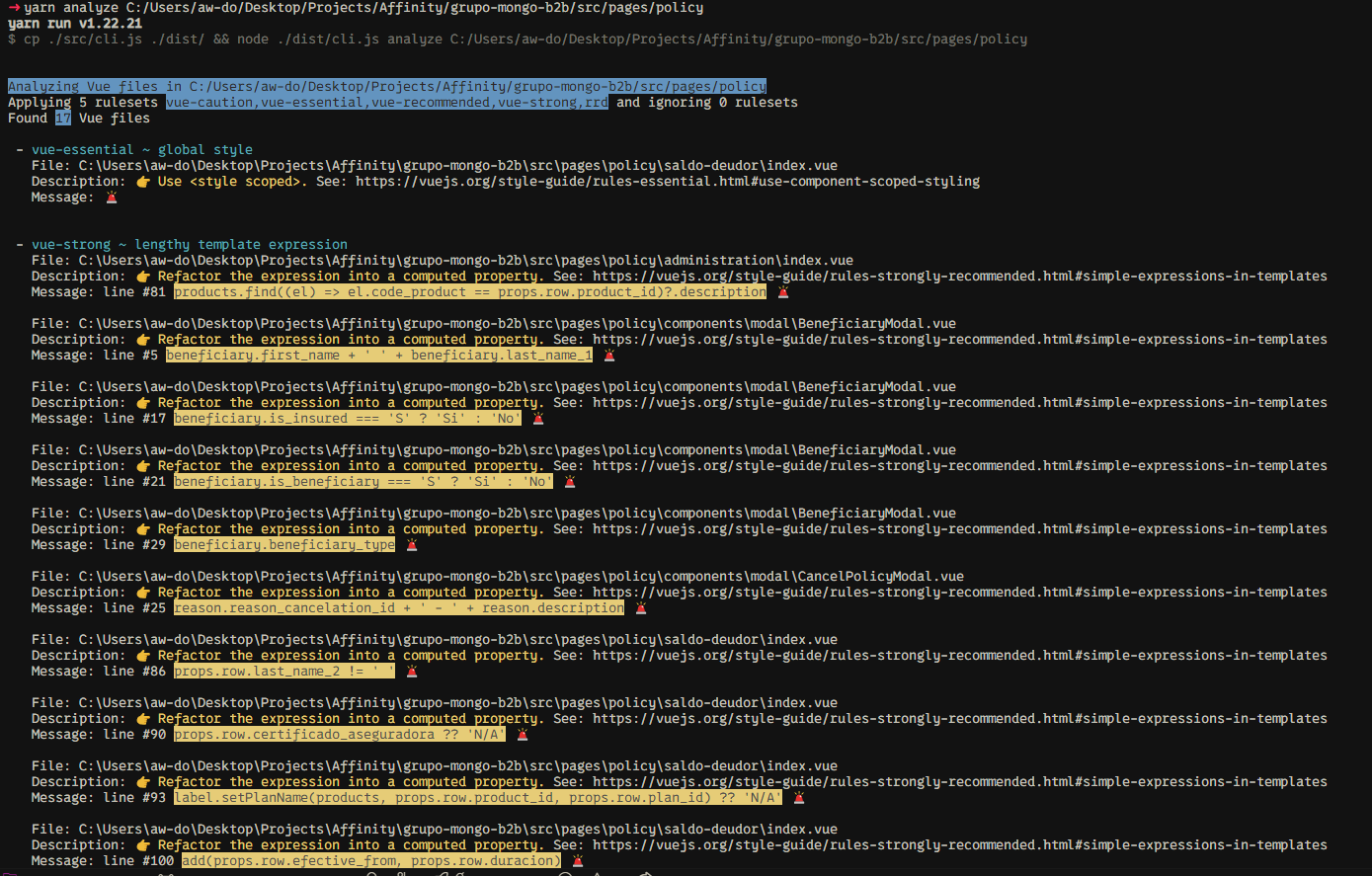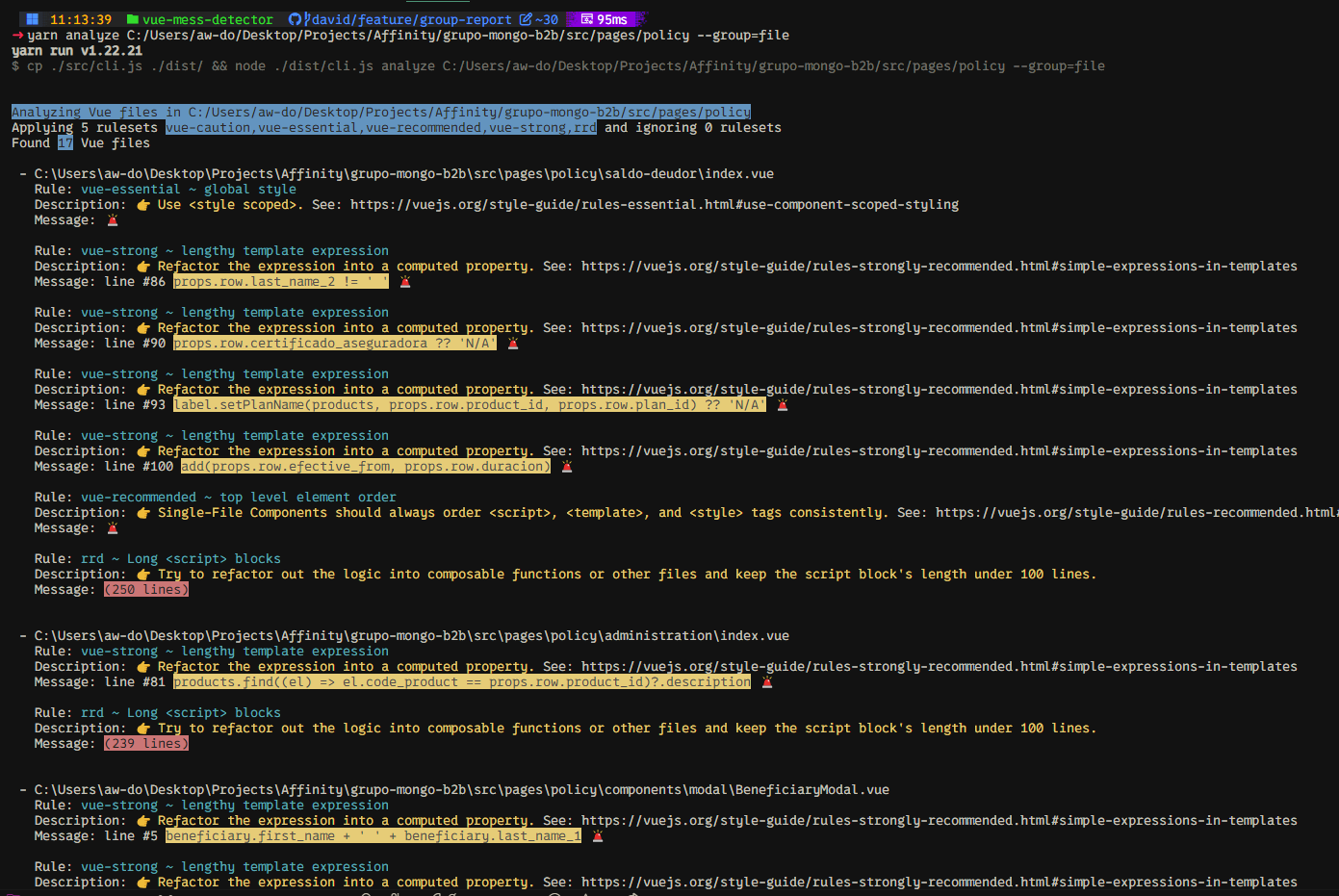A static code analysis tool for detecting code smells and best practice violations in Vue.js and Nuxt.js projects.

rrd |

David Pena |
Launch VS Code Quick Open (Ctrl+P), paste the following command, and press enter.
ext install WebMania.vue-mess-detector
More info: https://marketplace.visualstudio.com/items?itemName=WebMania.vue-mess-detector
# using pnpm
pnpm add vue-mess-detector -D
# using yarn
yarn add vue-mess-detector -D
# using npm
npm install vue-mess-detector --save-dev
# using bun
bun add @rrd/vue-mess-detector --dev# using deno
deno add @rrd/vue-mess-detector
# using pnpm
pnpm dlx jsr add @rrd/vue-mess-detector -D
# using yarn
yarn dlx jsr add @rrd/vue-mess-detector -D
# using npm
npx jsr add @rrd/vue-mess-detector --save-dev
# using bun
bunx jsr add @rrd/vue-mess-detector --devBasic usage:
npx vue-mess-detector analyze [path]Options:
| Option | Description | Default | Example |
|---|---|---|---|
[path] |
Specify directory or file to analyze | ./src |
./src/components/AppHeader.vue |
--exclude |
Exclude directories or files (comma-separated) | None | --exclude=components,Gauranga.vue |
--apply |
Apply only specific rulesets or rules (comma-separated) | All rules | --apply=vue-essential,magicNumbers |
--ignore |
Ignore only specific rulesets or rules (comma-separated) | - | --ignore=vue-caution,functionSize |
--group |
Group results by file or rule |
rule |
--group=file |
--sort |
Order results asc or desc |
asc |
--sort=desc |
--level |
Show only specific level error or all |
all | --level=error |
--output |
Output format text or table or json |
text |
--output=table |
--file-output |
The name of the file to save output to | None | --file-output=analysis.txt |
If you want to store your flags in a configuration file, you can create a vue-mess-detector.json file in the root of your project with the following content:
{
"apply": "vue-strong,rrd",
"level": "error"
}Then you can run the command without flags:
npx vue-mess-detector analyzeAll flags will be read from the configuration file. All missing flags will be set to their default values except if you provide them as flags in the command line.
Group by Rule: In this view, the first line is highlighted in blue, representing the rule being evaluated. Following this, you'll see blocks of information structured as follows: file path, description, and message.
Group by File: In this view, the first line displays the file path being evaluated. Below this, you'll see blocks of information with the following structure: rule, description, and message.
- Rule: The blue line that defines the specific rule being evaluated.
- File: Shows the path to the file where the rule is applied.
- Description: A concise explanation of the rule, often accompanied by a link to relevant documentation for further details.
- Message: Indicates the line of code where the rule was violated.
Important
Yellow messages are warnings, suggesting best practices, while red messages highlight errors that must be corrected.
According to the number of errors and warnings, and the lines of code in your project, we calculate a health score for your project.
The code health is:
- low if the score is under 75%
- medium if the score is between 75% and 85%
- ok if the score is between 86% and 95%
- good if the score is above 95%
👉 For more information, see the documentation.
👉 Join our discord server
See CONTRIBUTING.md file.


